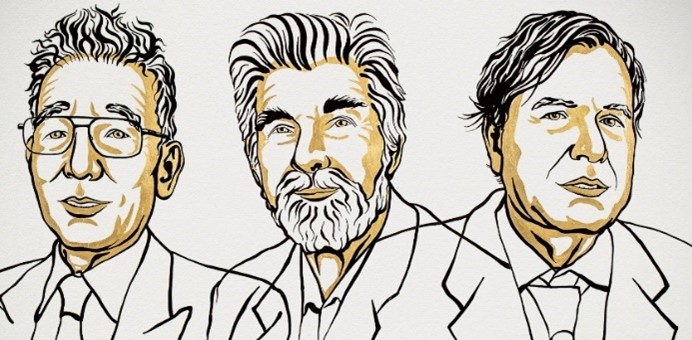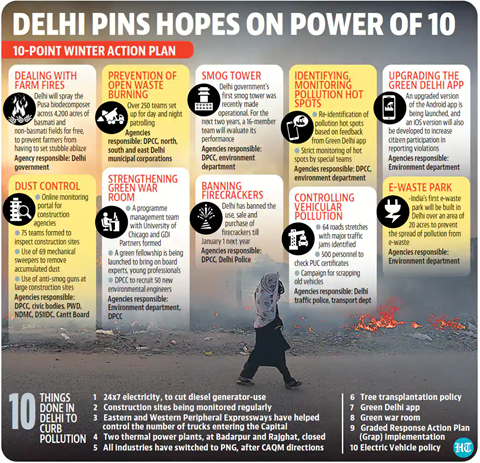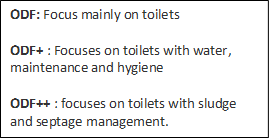Thursday, 7th October 2021
Nobel Prize in Chemistry - Edukemy Current Affairs
In News
The 2021 Nobel Prize in Chemistry has been awarded to Benjamin List and David W C MacMillan for the development of asymmetric organocatalysis.
About the News
- The Contribution: Benjamin List and David MacMillan have been awarded the Nobel Prize in Chemistry 2021 because in 2000 they, independent of each other, developed a third type of catalysis. It is called asymmetric organocatalysis and builds upon small organic molecules.
- Catalysts: The major types of catalysts are metals and enzymes. In 2000, Dr. List and Dr. MacMillan, developed a third type of catalysis named asymmetric organocatalysis.
- Catalysts are molecules that remain stable while enabling or speeding up chemical reactions performed in labs or large industrial reactors.
- Applications of Catalyst: Many research areas and industries are dependent on chemists’ ability to construct molecules that can form elastic and durable materials, store energy in batteries or inhibit the progression of diseases.
- Our bodies also contain thousands of catalysts in the form of enzymes, which chisel out the molecules necessary for life.
What is Organocatalysis?
- About: Organocatalysis is a catalyst that helps to build upon small organic molecules. It helps to produce asymmetric molecules - chemicals that exist in two versions, where one is a mirror image of the other.
- Catalysis is the process of increasing the rate of a chemical reaction by adding a catalyst.
- Applications: Organocatalysis finds several applications in pharmaceutical research and other industries making chemistry greener.
- It has helped in streamlining the production of existing pharmaceuticals like paroxetine-that is used to treat anxiety and depression and oseltamivir-a respiratory infection medication.
- Using organocatalysis, researchers can now more efficiently construct anything from new pharmaceuticals to molecules that can capture light in solar cells.
Significance of the Contributions
- The metal catalysts that were used earlier in research were rarely taken up by the industry because achieving the oxygen-free and moisture-free conditions demanded by these catalysts was difficult at large scales.
- Thus simple organic molecules (chemicals that contain carbon and hydrogen bonded together) which could do the same job as metals, but were not destroyed by moisture were designed and created by him.
Benjamin List
- He had been able to show that a simple amino acid called proline could act as a highly effective catalyst. It was also cheap and environmentally-friendly.
Source:
PM-MITRA scheme
In News
The Union cabinet cleared a ₹4,445 crore scheme to build seven mega textile parks over five years seeking to boost manufacturing and jobs.
About the news
- With an aim to create world-class infrastructure with plug-and-play facilities that enable major investments in exports, the Union Cabinet recently approved seven new mega textile parks.
- The parks are a part of the government's 'Farm to Fiber to Factory to Fashion to Foreign' push, and aim to generate 1 lakh direct & 2 lakh indirect employment per park.
- Objective:
- To integrate the currently scattered value chain of textile products
- To take advantage of economy of scale to boost competitiveness.
- To boost manufacturing and export of textiles
- To generate employment to the tune of 100,000 direct and 200,000 indirect jobs.

Working of the PM-MITRA Scheme
- PM MITRA Park: It will be developed by a Special Purpose Vehicle (SPV), which will be will be set up with 49% central government stake and 51% holding by the respective states in a Public Private Partnership (PPP) Mode.
- The developers will get long-term lease (25 years) of the park with real estate development rights, but it will be their responsibility to bring in investors to set up the units.
- Incentives to attract investors: For Greenfield projects, 30% of the infrastructure cost will be available as viability gap funding, while brownfield projects will get support of 30% of the ‘remaining cost’.
- For the first movers or anchor investors who begin production at these parks, a competitive incentive support will be provided.
- Competitive allocation of parks: There will be a contest through a transparent challenge route, based on which State gives the cheapest land, best facilities, adequate electricity and water supplies, which State has an untroubled and stable labour situation.
Sources:
- Cabinet Approves Scheme to set up 7 mega textile parks
- Cabinet Approves setting up of 7 mega integrated textile parks
- Cabinet Approves seven mega textile parks
Image source:
Mosquirix
In News
The World Health Organization (WHO) has endorsed the world's first malaria vaccine, Mosquirix (RTS, S/ASO1 (RTS.S).
About the News
- About: RTS,S/ASO1 (RTS.S), trade name Mosquirix, which was endorsed by the World Health Organisation (WHO), is the first and, to date only, vaccine shown to have the capability of significantly reducing malaria, and life-threatening severe malaria, in tests on young African children..
- Recognition: This is the first malaria vaccine that has completed the clinical development process, and received a positive scientific opinion from the European Medicines Agency (EMA).
- Proven Results: It is also the first malaria vaccine to be introduced by three national ministries of health through their childhood immunization programmes — more than 800,000 children in Ghana, Kenya, and Malawi have been vaccinated, and are benefiting from the added protection provided by the vaccine as part of a pilot programme.
- Developed by: It has been developed by British pharmaceutical company GlaxoSmithKline (1987) in partnership with the PATH Malaria Vaccine Initiative (a non-profit organisation).
- Efficacy: The vaccine's effectiveness at preventing severe cases of malaria in children is only around 30%, but it is the only approved vaccine. The European Union's drugs regulator approved it in 2015, saying its benefits outweighed the risks.
How does Mosquirix work?
- The active substance in Mosquirix is made up of proteins found on the surface of the Plasmodium falciparum parasites.
- When it is administered to a child, the immune system recognizes the 'foreign' proteins from the parasite and makes antibodies against them.
- Antibodies are induced against malaria parasites that have entered the blood and have reached or are traveling to the liver, where they can mature and multiply.
- The vaccine limits the ability of the parasites to mature in the liver and cause clinical disease.
What are concerns related to the Vaccine?
- 4 dose Vaccine: The first three doses of the vaccine will be administered with a minimum interval of one month between each dose, followed by the fourth dose 15 to 18 months after the third dose.
- Not Long Lasting: It is unclear of how long the protection last.
- Finance: Mobilizing financing for the production and distribution of the vaccine of some of the world’s poorest countries would be a challenge.
- Effectiveness: Effectiveness of the vaccine is very low around 30%. (But it is the only approved vaccine).
About Malaria
- Malaria is a life-threatening disease caused by parasites that are transmitted to people through the bites of infected female Anopheles mosquitoes.
- It is preventable and curable.
- In 2019, there were an estimated 229 million cases of malaria worldwide, and the estimated number of malaria deaths that year stood at 409,000.
- Children aged under 5 years are the most vulnerable group affected by malaria accounting for 67% (274,000) of all malaria deaths worldwide in 2019.
- 94% of malaria cases and deaths occur in Africa.
- India had an estimated 5.6 million cases of malaria in 2019. (3% worldwide)
Sources:
- Explained: What is Mosquirix, the first malaria vaccine to get the WHO’s backing?
- All you need to know about Mosquirix, first malaria vaccine approved by WHO
- Malaria vaccine a ‘breakthrough for science’, WHO chief says
- Malaria: The malaria vaccine implementation programme (MVIP)
NSO’s SAAH Survey Report 2019
In News
The National Statistical Office’s (NSO) recently released ‘Situation Assessment of Agricultural Households and Land and Livestock Holdings of Households in Rural India, 2019’ report.
About the News
- The National Statistical Office (NSO) carried out a survey on Land and Livestock Holdings of Households and Situation Assessment of Agricultural Households in the rural areas of the country.
- The survey has been conducted during the period January 2019 to December 2019.
- Prior to 77th round, Land and Livestock Holding Surveys (LHS) and Situation Assessment Survey (SAS) of Agricultural Households used to be conducted as separate surveys in separate sets of households.
- The detailed socio-economic data set provides insight into a farmer’s investment behaviour, level of indebtedness and income earned from various activities.
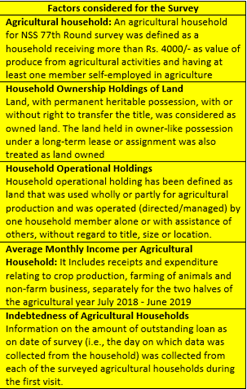
What do the Findings indicate?
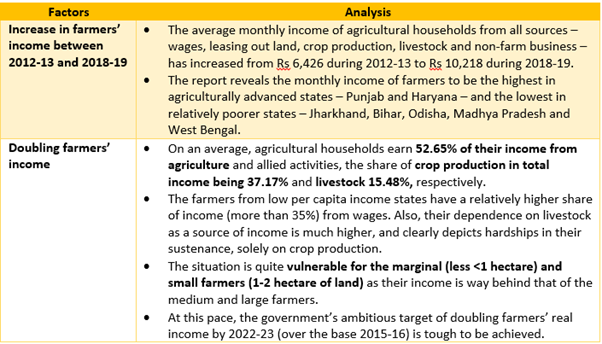
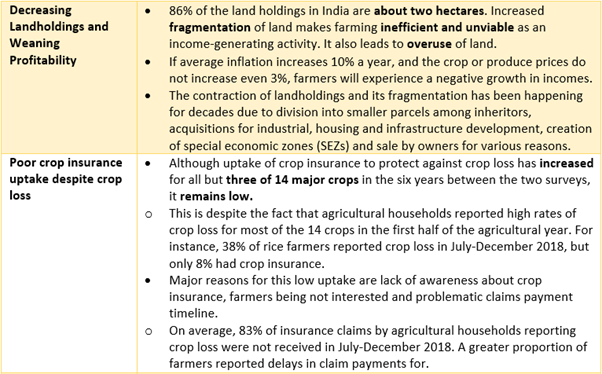
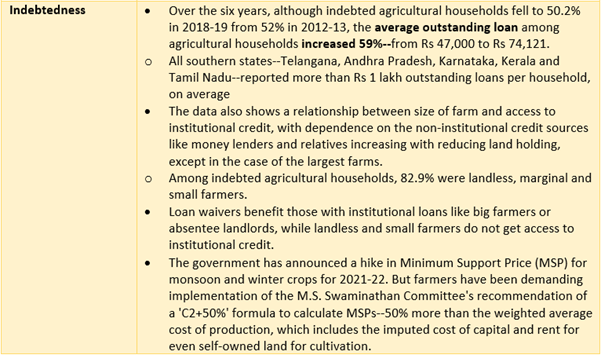
Way Forward
- Small and marginal farmers deserve a differential income support scheme which will provide higher support to them. Such a targeting is now possible using the database of PM Kisan and JAM trinity.
- But, there is need for consideration of irrigation status of land or the status of procurement of crops at MSP (like wheat, paddy, sugarcane) for direct income support under the PM Kisan.
- A faster updation of land records by each state can be useful in better targeting of direct support in the future. The government should issue a farmer card to labourers and women farmers to make them avail the benefits under the income support and other schemes.
Conclusion: The much-celebrated “green revolution” farming model has reached a dead-end. Indian agriculture needs subsidies and massive public sector investment. There is need to rethink the present model of agriculture: how do we stem the tide of farmers turning into agricultural labourers? How do we make small farms remunerative?
Question: Despite the consistent efforts of government, the status of farmers on various parameters remains bleak as per the recent NSO’s SAAH Survey Report 2019. Analyze.
Sources:
- Situation Assessment of Agricultural Households and Land and Livestock Holdings of Households in Rural India, 2019
- Indebted India: Over half of farm households still under debt
- NSS survey on farmers is a mid-term report card of Modi’s promise, with ‘fail’ written over it
- What the Latest NSS Survey Tells us About the State of Farmers in India
- In 6 years before Covid, India's average farm incomes rose 59% and debt 58%
- Where have the large Indian farmers gone?
This Day in History - Missionaries of Charity
On October 7, 1950 the Missionaries of Charity was established by Mother Teresa. The Missionaries of Charity began as a small community with only 12 members, but today, the organisation has over 4,500 members running orphanages, AIDS nursing homes, and caring for refugees, the blind, disabled, aged, alcoholics, the poor and homeless victims of floods, epidemics and famine. The Missionaries provide their services without any charge
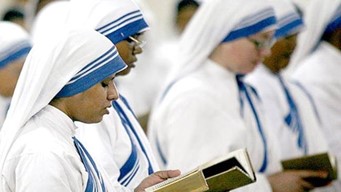
Source:
Image of the Day - Mughal emperor's glasses
This is image of spectacles, studded with diamonds and emerald lenses from Mughal India. These spectacles will be up for auction at the end of this month in London for an estimated £4 million. The pair is said to be commissioned by an unknown prince for whom an artist shaped a diamond, weighing over 200 carats, and an emerald, weighing at least 300 carats, into two pieces.

Sources:
BSE Tech
- Context: BSE Tech has received approval from the RBI for setting up and operating Trade Receivables Discounting System (TReDS).
- BSE Tech is a BSE (Bombay Stock Exchange) -owned leading IT solutions provider for the broking community.
- BSE Tech focuses on commodities, banking, and financial services markets in India to provide multiple solutions including clearing and settlement system, back-office operations, maintenance of client records, bulk mailers, payment gateway, etc.
- After this approval, BSE Tech has the capability to provide an option to MSME to manage their working capital more efficiently through the TReDS platform.

Sources:
Online System for Aviation Safety
- Context: The Directorate General of Civil Aviation (DGCA) has introduced a web-based system for Aviation Safety.
- The web-based system has been introduced on the E-Governance for Civil Aviation (eGCA) platform for voluntary reporting of incidents that pose a potential threat to flight safety.
- This makes the reporting mechanism more accessible to persons engaged in aviation related activities and facilitates collection of information on actual or potential safety deficiencies that may not be captured earlier.
- However, the Voluntary Safety Reporting System is not a substitute for Mandatory Safety Reporting System.
- It would be non-punitive and the information collected would not be used for purposes other than safety.
- The confidentiality about the identity of the person making the report would be maintained. While anonymous reports would be accepted, the person may disclose his/her identity to enable contact if any part of the report needed clarification.

Source:
Soda Ash
- Context: A huge focus on renewable energy with government and private sector investment is said to increase the demand for Soda Ash.
- Soda ash, also known as sodium carbonate (Na2CO3), is an alkali chemical refined from the mineral trona or naturally occurring sodium carbonate-bearing brines both referred to as "natural soda ash".
- It is also manufactured from several chemical processes where it is referred to as "synthetic soda ash").
- Soda ash is a key ingredient in the manufacture of flat and float glass for construction and automobiles, container glass for packaging of beverages, spirits, food and pharma, detergents etc.
- Tata Chemicals, a subsidiary of the Tata Group, is one of the world’s largest producers of soda ash.
- Increased demand for flat glass in solar application is a major factor towards overall soda ash demand growth.
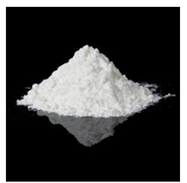
Source:
Image Source:
Tripartite Agreements
- Context: Gencos (generation companies) backed by Power Ministry are hardening their stand against consistently defaulting states/discoms by invoking the tripartite agreement (TPA).
- TPAs are a payment security mechanism for power supplied from Central gencos to States.
- TPAs are signed among central gencos, disoms and the Reserve Bank of India.
- Under the agreement, the central bank can deduct the defaulting amount from the accounts of states with the RBI.
- RBI is the custodian of the accounts, into which all tax devolutions from the central government flow.
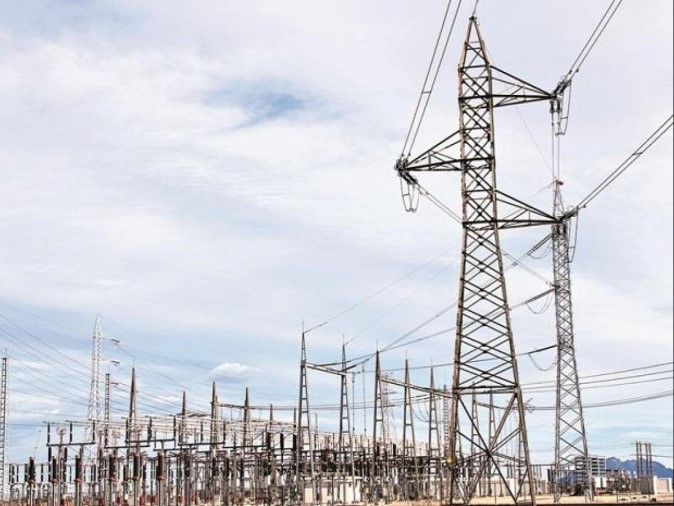
Source:
Trade multilateralism at risk -TH
Essence: The Article talks about World Tade Organization (WTO), which once an example of triumphant free market capitalism and is facing existential crisis. The major challenge is from USA which has been blocking appointments to Appellate Body and vetoing alternative solutions. The other challenges are no solution has been found to public procurement to food security purposes, disagreement on waving off TRIPS agreement for COVID-19 related medical products, finalising deal on regulating subsidies provided for fisheries sector and the emergence of mega plurilateral trade agreements which fragment the global trade regime. The ministerial meeting at Geneva provides an opportunity to revive WTO to fight against unilateralism and economic nationalism rather than letting it become an institutional zombie.
Why you should read this?
- To understand the importance of WTO in protecting trade multilateralism.
- To know about the challenges which the WTO is facing.
Source:
A strategy for India in a world that is adrift -TH
Essence: The article sharply focuses the discussion on the world being in between the struggle for power, where the power centre is adrift, and the world's lack of international cooperation and control is missing. In between many power centres Asiatic region is supposed to be the nucleus of the world powers' attention in terms of geopolitical rivalries. As a whole, this will be an opportunity and a challenge as well for India where it could benefit from cooperation from the USA in the fields of trade, energy, and technology. On the other hand, it seemingly has to be cautious of Chinese growth in Asia and as a world power. As highlighted in the article some of the initiatives India can take are withholding principles of NAM as NAM 2.0, revive SAARC, and building its self-strength.
Why you should reach this article?
- To understand the world politics trend, shift from bi-polar to multi-polar, and now to adrift.
- To understand the diplomatic and geostrategic initiatives India must take to secure itself from the challenges from the adrift world.
Source:
Why India needs an urbanisation policy-IE
Essence: The article highlights the rapid urbanisation that is taking place and the challenges associated with it. Issues range from managing the solid waste to addressing the water supply issues. To address the issues associated a well-thought-out urbanisation policy to guide the planning and management of cities is needed.
The policy should address the concerns like the size and the density of the city. The sources of finance, whether it should rely on capital markets or raise revenue by levying taxes. Planning and layout of the city along with addressing the sustainability and addressing the climate issues. A policy which guides how the growing urban population lives, works, and plays in India’s cities of the future is the need of the hour.
Why you should read this article?
- To understand the issues associated with rapid urbanisation.
- To understand the key areas a sound urbanisation policy should address.
Source:
Innovation for Simplification
Background
- In India, women spend up to 352 minutes (approximately five hours) every day in household chores.
- Many a times they are forced to handle multiple roles at a time i.e., from cleaning the house to cooking meals, before they can leave for work.
A daughter at her mother’s pain
- About: A 14-year-old school girl, Navshri Thakur’s of Madhya Pradesh’s Dokrikheda village, designed a prototype instrument for her mother.
- Principle used: She applied simple scientific principles for the design that can help in multiple household chores.
- Assistance: To improve the design and to develop a real-time prototype, too assistance from her teacher.
- Functionality: The device can be operated by hands and has eight functions including cutting vegetables, extracting juice, crushing spices, and rolling roti, among others.
- Portable: The device is like building blocks having removable parts that serve different purposes.
- Cost-effective: It was built with the help of a local carpenter bearing the cost less than Rs 3,000.
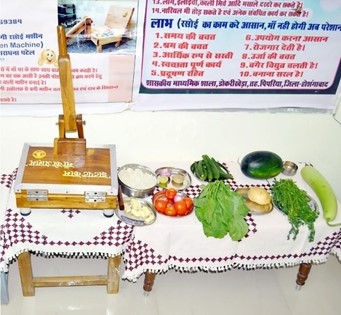
Lesson learnt:
Innovation, Necessity, Empathy, Gender roles, Gender Bias
Quote:
“You can’t solve a problem on the same level that it was created. You have to rise above it to the next level.” –Albert Einstein
Source:
Share the article
Get Latest Updates on Offers, Event dates, and free Mentorship sessions.

Get in touch with our Expert Academic Counsellors 👋
FAQs
UPSC Daily Current Affairs focuses on learning current events on a daily basis. An aspirant needs to study regular and updated information about current events, news, and relevant topics that are important for UPSC aspirants. It covers national and international affairs, government policies, socio-economic issues, science and technology advancements, and more.
UPSC Daily Current Affairs provides aspirants with a concise and comprehensive overview of the latest happenings and developments across various fields. It helps aspirants stay updated with current affairs and provides them with valuable insights and analysis, which are essential for answering questions in the UPSC examinations. It enhances their knowledge, analytical skills, and ability to connect current affairs with the UPSC syllabus.
UPSC Daily Current Affairs covers a wide range of topics, including politics, economics, science and technology, environment, social issues, governance, international relations, and more. It offers news summaries, in-depth analyses, editorials, opinion pieces, and relevant study materials. It also provides practice questions and quizzes to help aspirants test their understanding of current affairs.
Edukemy's UPSC Daily Current Affairs can be accessed through:
- UPSC Daily Current Affairs can be accessed through Current Affairs tab at the top of the Main Page of Edukemy.
- Edukemy Mobile app: The Daily Current Affairs can also be access through Edukemy Mobile App.
- Social media: Follow Edukemy’s official social media accounts or pages that provide UPSC Daily Current Affairs updates, including Facebook, Twitter, or Telegram channels.

